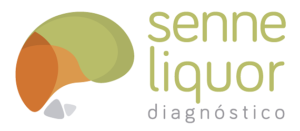Tema
Avaliação de parâmetros inflamatórios no LCR
Introduction
The presence of CSF oligoclonal bands is a qualitative indicator of intrathecal inflammation. Other CSF parameters are also able to demonstrate neuroinflammation.
The aim of this study was to compare cytological, biochemistry, and immunological data in CSF samples with and without oligoclonal bands.
Methods
We evaluated CSF samples sent to “Senne Liquor Diagnostico” for intrathecal immune production analysis. CSF samples with type 2 and type 3 oligoclonal bands patterns were considered positive (BOC+) (Figure 1). The remaining CSFs were considered BOC-.
The CSF parameters of BOC+ and BOC- were compared by t test or Chi square. The variables with statistical significance were further evaluated by binary regression.
Results
With univariate analysis the parameters with statistical significance were (Figure 2):
Lymphocytes:
BOC+ 8.38±16.89 x BOC- 4.21±15.42 mm3 (P<0.0001);
Monocytes:
BOC+ 0.65±2.8 x 0.39±2.8 mm3 (P=0.01);
Gama-globulin:
BOC+ 6.12±8.74 x BOC- 4.08±6.1 (P<0.0001)
CSF IgG:
BOC+ 6.6±32.7 x BOC- 3.9±21.7 (P<0.0001)
Reiber nomogram: P<0,0001
IgG index:
BOC+ 1.097±0.01 x BOC – 0.55±0.01 (P<0.0001).
All variables but monocytes (P=0.378) count were still significantly different after multivariate analysis.
Conclusion
Inflammatory parameters, including lymptocytes, gamma- globulin, IgG, Reiber, and IgG index were able to distinguish BOC positive and BOC negative CSF samples.



